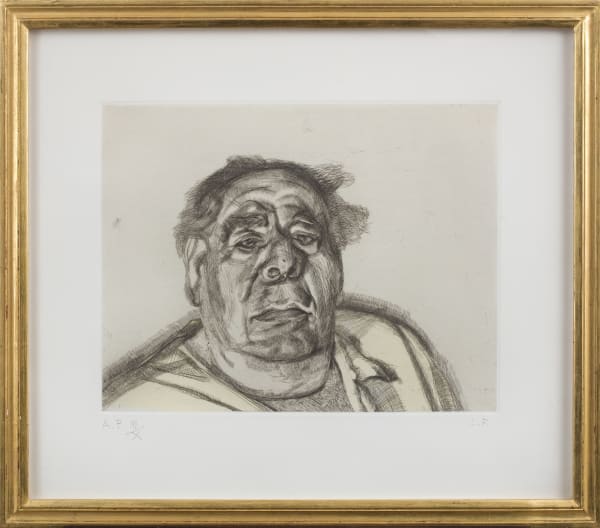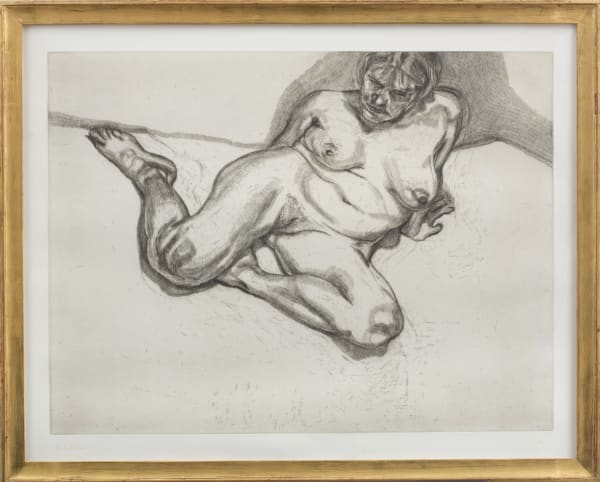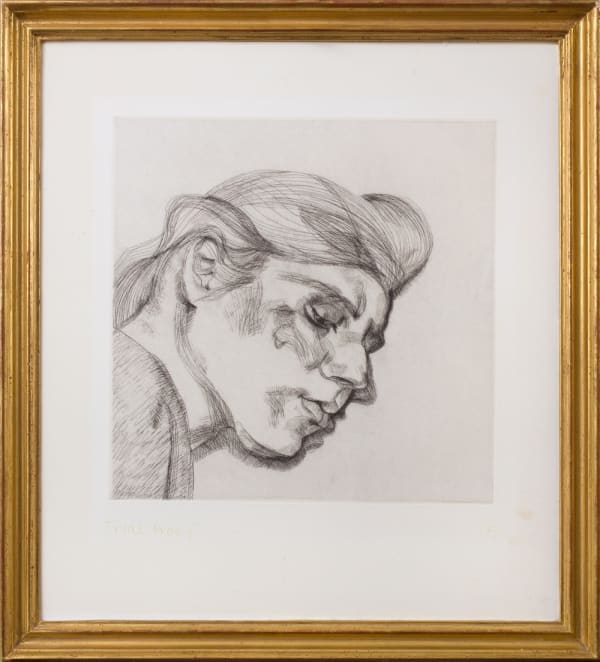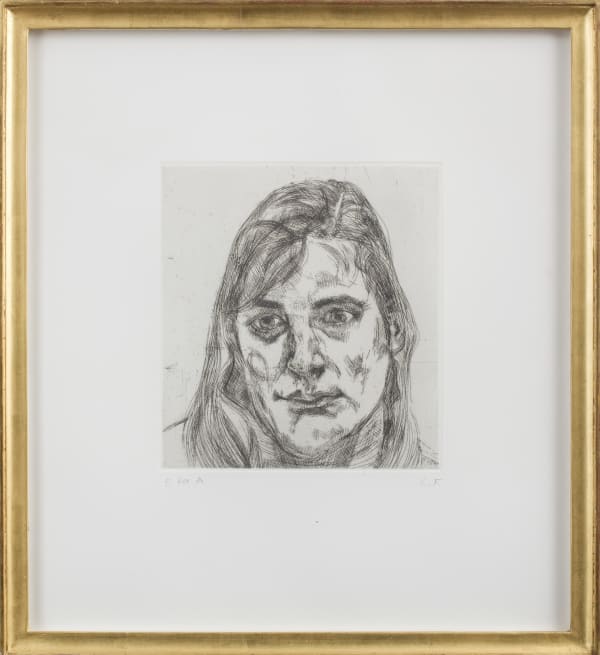-
LUCIAN FREUD | ETCHINGS
1984 - 2000
-
Lucian Freud returned to etching in 1982 after a hiatus of thirty-four years, having previously made several etchings in 1946–48. Robert Flynn Johnson observed that his new idiom of etching used ‘a more relaxed line than his earlier etchings. They reflect a spontaneity and simplicity of execution rarely seen in the frequently oversophisticated world of contemporary printmaking.’ Freud told his biographer William Feaver that the impetus to make etchings ‘was a direct jump from paintings to etchings’; almost all of Freud’s later prints emerged from compositions begun in painting. As he explained, ‘going from one medium to another, from drawing to painting, say, does refresh.’
Freud often chose to represent those with whom he was personally acquainted. The prints Bella (1987) and Esther (1991) depict his daughters by Bernardine Coverley, Bella and Esther Freud. Ib (1984) depicts another of Freud’s daughters, Isobel (‘Ib’) Boyt. Lord Goodman was an eminent solicitor and dealmaker of his age, with whom Freud became ‘in a sensationally short space of time […] a very close friend’. Girl Sitting depicts Sophie de Stempel, who modelled for several of Freud’s most ambitious nude portraits of the eighties.
-
-
-
In Freud’s hands, etching became a form of sophisticated, highly finished drawing. From 1987 onwards he placed the copper plate on an easel and worked into it much as he did with canvas and oils. Working directly from a life model as he did when painting or drawing, he used a needle to scratch into the ground. As with brush marks in his painting, Freud’s etched line is charged with formal intensity, and the lines are frequently used simultaneously to describe the shape of the form and to create effects of modelling.
-
-
-
"With etching, there’s an element of danger and mystery.
You dont know how its going to come out.
What’s black is white. What’s left is right"
- Lucian Freud
-
-
Past viewing_room






